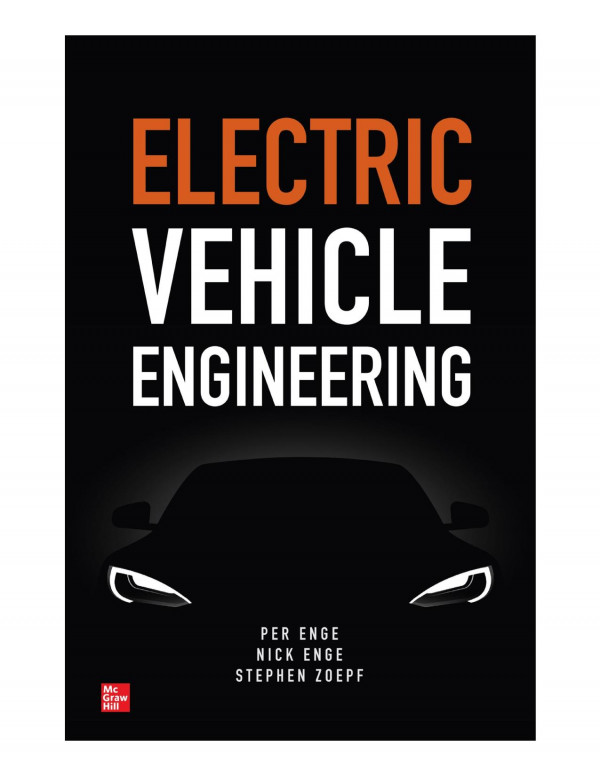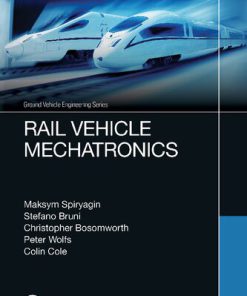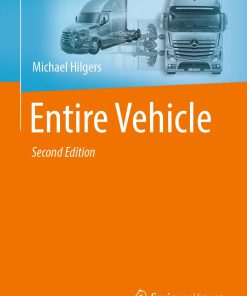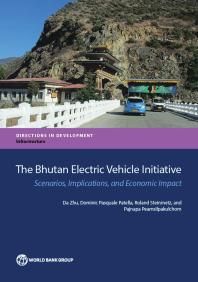Electric Vehicle Engineering 1st Edition by Per Enge, Nick Enge, Stephen Zoepf 1260464075 9781260464078
$50.00 Original price was: $50.00.$25.00Current price is: $25.00.
Electric Vehicle Engineering 1st Edition by Per Enge, Nick Enge, Stephen Zoepf – Ebook PDF Instant Download/Delivery: 1260464075, 9781260464078
Full download Electric Vehicle Engineering 1st Edition after payment

Product details:
ISBN 10: 1260464075
ISBN 13: 9781260464078
Author: Per Enge, Nick Enge, Stephen Zoepf
A complete guide to electric vehicle design, operation, and adoption This hands-on resource thoroughly explains the technologies and techniques involved in the design and operation of today’s electric vehicles. Originally written for use in a course co-taught by the authors at Stanford University, Electric Vehicle Engineering discusses the physics of vehicle motion; the electrical principles on which motors rely; the chemistry, operation, and charging of lithium-ion batteries; the design and operation of motor controllers; the energy efficiency and environmental impact of electric vehicles; and the policy and economics affecting their adoption. After teaching you the theory, the authors will guide you through a hands-on project in which you will build a model electric car from the ground up with a hand-wound electric motor of your own design. Coverage includes: Introduction to electric vehicles Electric vehicle history Vehicle dynamics Electric motors Lithium-ion batteries Controllers Well-to-wheels energy and emissions analysis Electric vehicle policies and economics Future prospects
Electric Vehicle Engineering 1st Table of contents:
1 The Promise of Electrification
2 History of Electric Vehicles
2.1 Introduction
2.2 Early History
2.3 Nineteenth Century
2.4 Twentieth Century
2.5 Twenty-First Century
2.6 Conclusion
2.7 Homework Problems
3 Vehicle Dynamics
3.1 Introduction
3.2 Forces Acting on a Rolling Vehicle
3.2.1 Aerodynamic Drag (Fad)
3.2.2 Rolling Resistance (Frr)
3.2.3 Hill Climbing (Fhc)
3.2.4 Linear Acceleration (Fla)
3.2.5 Angular Acceleration (Fωa)
3.2.6 Tractive Force (Fte)
3.3 Power Required for Rolling Motion
3.3.1 Power Required for Real-World Designs
3.3.2 Power Required for Air Resistance and Rolling Resistance
3.3.3 Power Required for Hill Climbing
3.3.4 Power Required for Acceleration
3.4 Modeling Real-World Conditions
3.4.1 Modeling v and a over Time
3.4.2 Modeling ψ over Time
3.4.3 Modeling Energy, Efficiency, and Range
3.5 Conclusion
3.6 Homework Problems
4 Motors
4.1 Introduction
4.2 The Lorentz Force Law
4.3 Coulomb’s Law
4.4 Biot-Savart’s Law
4.5 Brushed DC Motors
4.6 Brushless Motors
4.6.1 Brushless DC Motors
4.6.2 Brushless AC Motors
4.7 Reluctance Motors
4.8 Faraday’s Law
4.9 AC Induction Motors
4.10 Motor Efficiency
4.11 Maximum Acceleration
4.12 Conclusion
4.13 Homework Problems
5 Batteries
5.1 Introduction
5.2 Battery Fundamentals
5.3 Lithium-Ion Batteries
5.3.1 Cathode (+)
5.3.2 Anode (−)
5.3.3 Electrolyte
5.3.4 Circuit
5.3.5 Separator
5.3.6 Charging
5.3.7 Discharging
5.4 Battery Characteristics
5.4.1 Cost
5.4.2 Energy Storage/Charge Capacity
5.4.3 Battery Life
5.4.4 Energy Density
5.4.5 Specific Power
5.4.6 State of Charge and Depth of Discharge
5.4.7 Cell and Battery Voltages
5.4.8 Charge and Energy Efficiency
5.4.9 Battery Temperature
5.4.10 Battery Geometry
5.5 Electric Vehicle Charging
5.5.1 Charging Level
5.5.2 Charging Connectors
5.5.3 Charging Process
5.6 Conclusion
5.7 Homework Problems
6 Controllers
6.1 Introduction
6.2 Circuit Elements
6.2.1 Resistors
6.2.2 Inductors
6.2.3 Capacitors
6.2.4 Diodes
6.2.5 Transistors
6.3 Controllers
6.3.1 Step-Down DC Controllers
6.3.2 Step-Up/Down DC Controllers
6.3.3 AC Controllers
6.4 Conclusion
6.5 Homework Problems
7 Efficiency and Emissions
7.1 Energy Efficiency
7.1.1 Vehicle Efficiency
7.1.2 Charging Efficiency
7.1.3 Transmission and Distribution Efficiency
7.1.4 Generation Efficiency
7.2 Petroleum
7.2.1 Diesel
7.2.2 Diesel Electric
7.2.3 Gasoline
7.3 Coal
7.3.1 Fischer–Tropsch (F-T) Diesel
7.3.2 Coal-Fired Electric
7.4 Natural Gas
7.4.1 Compressed Natural Gas (CNG)
7.4.2 Hydrogen Fuel Cell
7.4.3 Natural Gas Electric
7.5 Biomass
7.5.1 Cellulosic Ethanol
7.5.2 Biomass Electric
7.6 Land
7.6.1 Cellulosic Ethanol
7.6.2 Solar Electric
7.7 Renewables
7.7.1 Renewable Electric
7.7.2 Renewable Fuel Cell
7.8 Greenhouse Gas Emissions
7.8.1 “Tailpipe” Emissions
7.8.2 Lifecycle Emissions
7.8.3 Future Emissions
7.9 Conclusion
7.10 Transportation Planning Assignment
8 Incentives and Barriers
8.1 Introduction
8.2 Incentives
8.2.1 Zero-Emission Vehicle Mandates
8.2.2 Fleet Emissions Requirements
8.2.3 Rebates and Tax Incentives
8.2.4 Reduced Vehicle Fees
8.2.5 HOV Lane Access
8.2.6 Support for Charging
8.3 Barriers
8.3.1 Range Anxiety
8.3.2 Cost
8.4 Conclusion
8.5 Homework Problems
9 The Future of Electric Vehicles
9.1 Introduction
9.2 Charging
9.2.1 Wireless Charging
9.2.2 Quick Charging
9.3 Battery
9.3.1 Increased Range
9.3.2 Increased Density
9.3.3 Decreased Cost
9.4 Innovative Vehicle Designs
9.5 Toward Complete Electrification
9.6 Conclusion
9.7 Homework Problems
People also search for Electric Vehicle Engineering 1st:
5 stroke engine animation
4 electric motor car
4 engineering
3 electric
Tags:
Per Enge,Nick Enge,Stephen Zoepf,Electric
You may also like…
Motorcycles
Engineering - Automotive
Electric and Hybrid Electric Vehicles by James D. Halderman 9780137532230 0137532237
Computers - Internet & World Wide Web
Computers - Internet & World Wide Web










